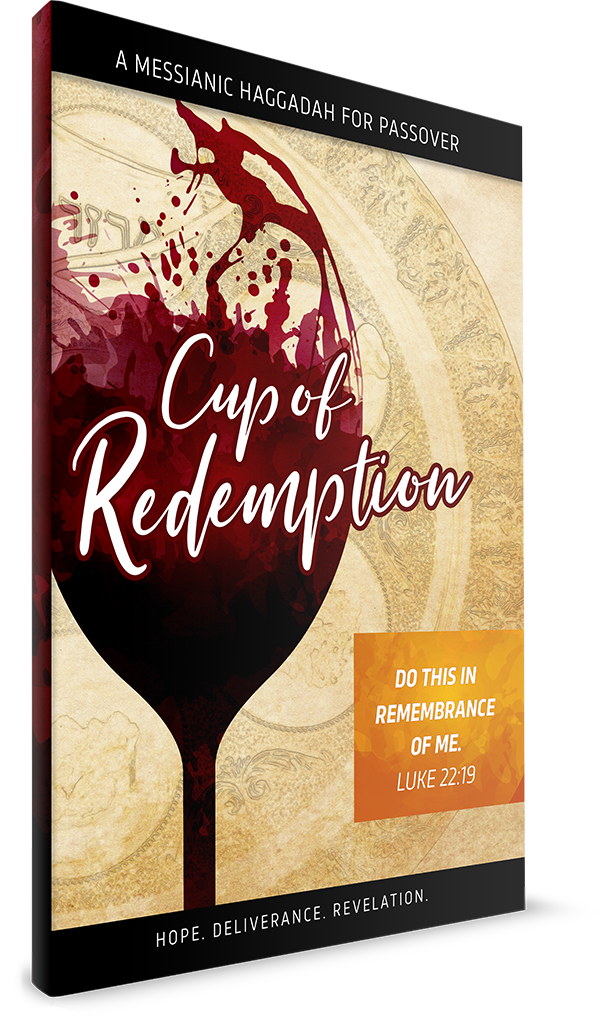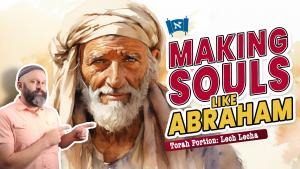Torn Garments, Wine Skins and Blotted Paper (Pt. 1)
Series:

Many times in our exploration of Jewish sources there will be a text which will help better elucidate a passage within the Scriptures, particularly the words of our Master. I would like to show how one such text does so in relation to Yeshua's double-parable of the Torn Garment and the Wine Skins. For no particular reason, I am going to use the version found in Mark's Gospel account. Let's take a look at this parable together.
No one sews a piece of unshrunk cloth on an old garment. If he does, the patch tears away from it, the new from the old, and a worse tear is made. And no one puts new wine into old wineskins. If he does, the wine will burst the skins—and the wine is destroyed, and so are the skins. But new wine is for fresh wineskins. (Mark 2:21-22)
In this teaching, we hear the words of Yeshua speaking of things foreign to our day. We no longer patch clothes, nor make wine in wineskins. Many have even gone so far as to decry alcohol as a whole, and feel the need to find creative ways to recreate Jewish history in regard to the biblical reference of "wine." They feel the need to apologize for habits of Yeshua and his disciples by saying they were merely consuming grape juice. However, in the days of the Master, fermented wine was the staple drink of life. Both he and his audience were well familiar with the fermentation process of wine-making. Once the juice was extracted from the grapes, it would be put into vats or wineskins to ferment. New wineskins (usually the whole hide of a goat) were perfect for this process, because they were slightly elastic in nature and would gently expand as the wine began fermenting and releasing carbon dioxide gas. A vent hole would be cut into the skin to ensure the skin would not burst if the fermenting process released too much gas. We don't think about this today, because commercially available grape juice is pasteurized. This kills the live bacteria within the juice which causes it to ferment. Pure grape juice automatically begins fermenting without any human intervention.
Old wineskins did not have the ability to stretch like the new wineskins. If one were to put grape juice into an old wineskin, the result would be just as our Master spoke: "the wine will burst the skins—and the wine is destroyed, and so are the skins."
As an aside, this brings to mind that which Yeshua said about John the Immerser:
What did you go out into the wilderness to see? A reed shaken by the wind? What then did you go out to see? A man dressed in soft clothing? Behold, those who wear soft clothing are in kings' houses. What then did you go out to see? A prophet? Yes, I tell you, and more than a prophet. (Matthew 11:7–9)
Yeshua's comments about John were directed to his disciples after John's disciples came with a message from John in prison. John was a prophet, and his prophetic nature got him into trouble with Herod. Yeshua reminded his disciples that John was unwavering in his stance against Herod's wickedness in relationship to the acquisition of his new wife (his brother's ex-wife). He was suffering in prison because he would not be "shaken" or "bend" like a reed and retract his outspoken criticism of Herod. Instead, he stood like an oak, which although was strong and mighty, was eventually broken by a turbulent storm. Yeshua brings this fact up to his listeners to remind them that John's question, asking "Are you the one who is to come, or shall we look for another?" (11:3) is not a question of doubt. As Yeshua pointed out, John was not one to waver. He was merely asking a legitimate question as to whether or not Yeshua would be the one who would fulfill all of the Messianic expectation, or whether there would be two Messiah figures. This is a concept well known in Judaism at the time. Understanding the diverse nature of the function of the Messiah, they divided the roles of Messiah into two: Mashiach ben Yoseph (Messiah, son of Joseph) and Mashiach ben David (Messiah, son of David). The first would be the suffering servant, while the second would be the conquering king who would restore the kingdom to Israel. John was not doubting, wavering, bending… it wasn't in his nature. He was merely asking a legitimate question to know what to expect during his lifetime. Back to our analysis…
This double-parable passage of the Torn Garment and Wine Skins is found within all three of the Synoptic Gospels: Matthew 9:16–17; Mark 2:21–22; Luke 5:36-38. It is somewhat unique in one regard: Amazingly, it is found within the same context in all three of the Synoptics. Why is this amazing? Because none of the Synoptic writers were eye-witnesses. They each collected their materials from other sources and compiled them to the best of their ability and arranged them in the order in which made sense to them. Only John records his Gospel as an actual eye-witness. This is why many of Yeshua's teachings and events are not necessarily in the same context from one Synoptic account to the next. One parable may be used in a particular context in Matthew, but not the same context in Luke. Or the chronology of events will differ from one to the other. This parable, however, remains in the same context throughout the Synoptics.
In Matthew, Mark and Luke this parable comes right after the calling of Matthew Levi. We believe his name to be Matthew Levi, since he is called Matthew in the Gospel of Matthew (an indication of the original source of this account), but he is called Levi by the other two writers. In all three accounts, the order of events is as follows:
- Yeshua calls Matthew Levi to become his disciple
- Yeshua goes to Matthew Levi's house to eat a meal along with "many tax collectors and sinners"
- Yeshua is questioned about his company
- Yeshua responds regarding those who are "well" verses those who are "sick"
- Yeshua is questioned again, but this time about why his disciples do not fast
- Yeshua responds with his parable of The Bridegroom and the parable of The Torn Garment & Wine Skins
The sequence of events are essential for proper understanding of this parable. However, a few teachings of the sages help us more quickly make a connection between these events and his parable. We will discuss this in Part 2 of Torn Garments, Wine Skins and Blotted Paper.
If you would like these teachings sent right to your Inbox, please sign up for our Dust of the Master newsletter.








